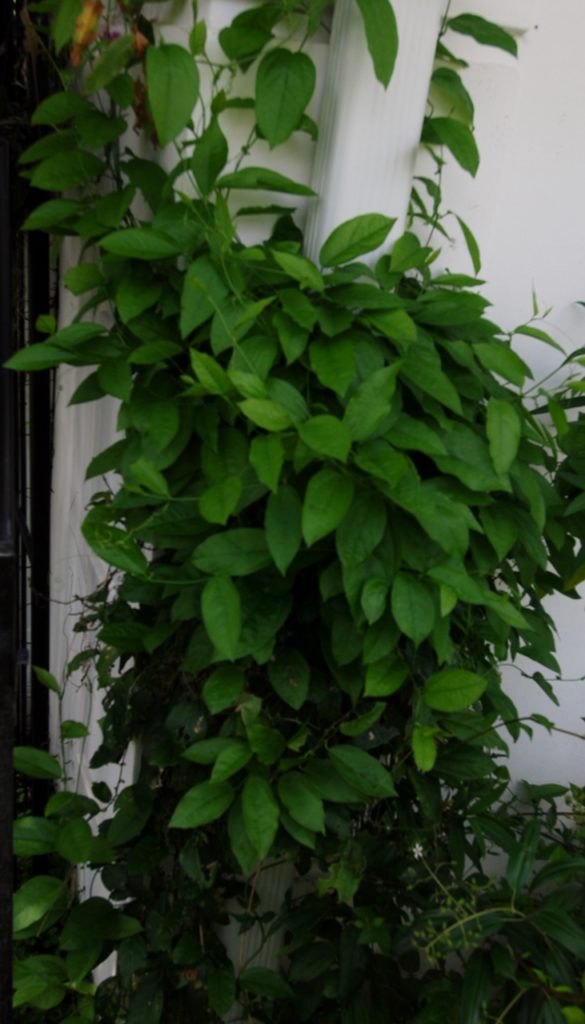
Corky Passionvine
Passiflora suberosa
Corky passionvine is found in South Florida, Texas and the West Indies. This is an easy plant to grow on a fence or even as an ivy-like ground cover.
The flowers are small and the edible fruit is pea sized and black. After several years the stem becomes thick and corky. This is a salt tolerant plant that can be used as a ground cover on the back side of the dune where it mixes well with sunshine mimosa and other beach wildflowers.
The dark green leaves are food for the caterpillars of the zebra longwing, gulf fritillary, and Julia butterflies. Put some in a hanging basket and place where you can easily watch the process from egg laying to emerging adults. A great way to turn your kids onto nature.
Corky Passionvine can tolerate some shade and grows well when planted with Firebush. Plant the two together outside of your screened patio and enjoy sitting and watching the caterpillars eat the leaves of the passionvine and the adult butterflies and hummingbirds sip nectar from the Firebush flowers.
I like to limb up the Firebush so that the Corky Passionvine can occupy the lower level. You may need to cut the passionvine back if it starts to cover the top of your Firebush.
When you first plant Corky Passionvine you may want to remove some of the butterfly eggs and caterpillars. If there are more than five caterpillars on one plant, they may eat it down to the ground and kill it.
Since it is often eaten back to several feet, it is safe to mix with other vines like Coral Honeysuckle, Balloonvine, Carolina Jessamine and Rubbervine.
When planted on a chain link fence, it will grow up the top of the fence where it fills out. Below that, it is mainly stems with few leaves.
For more information, click here.